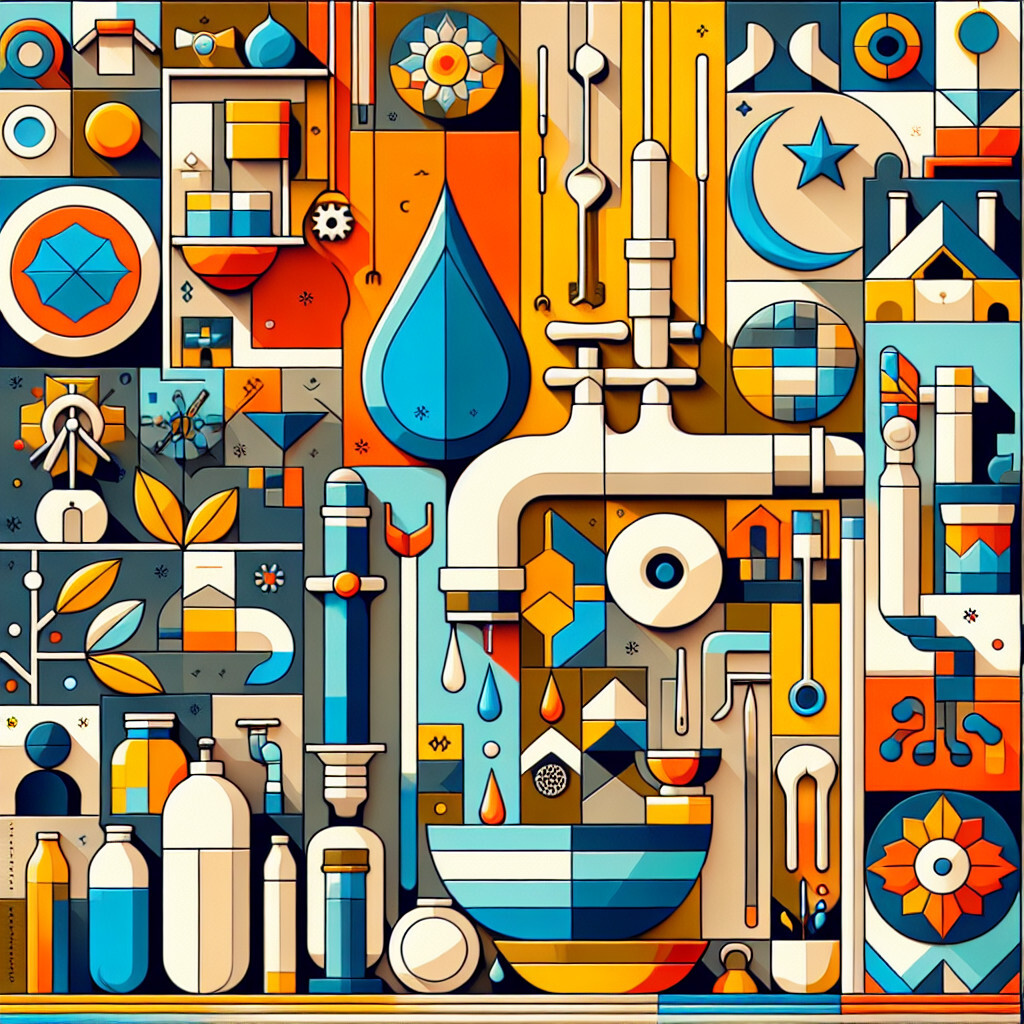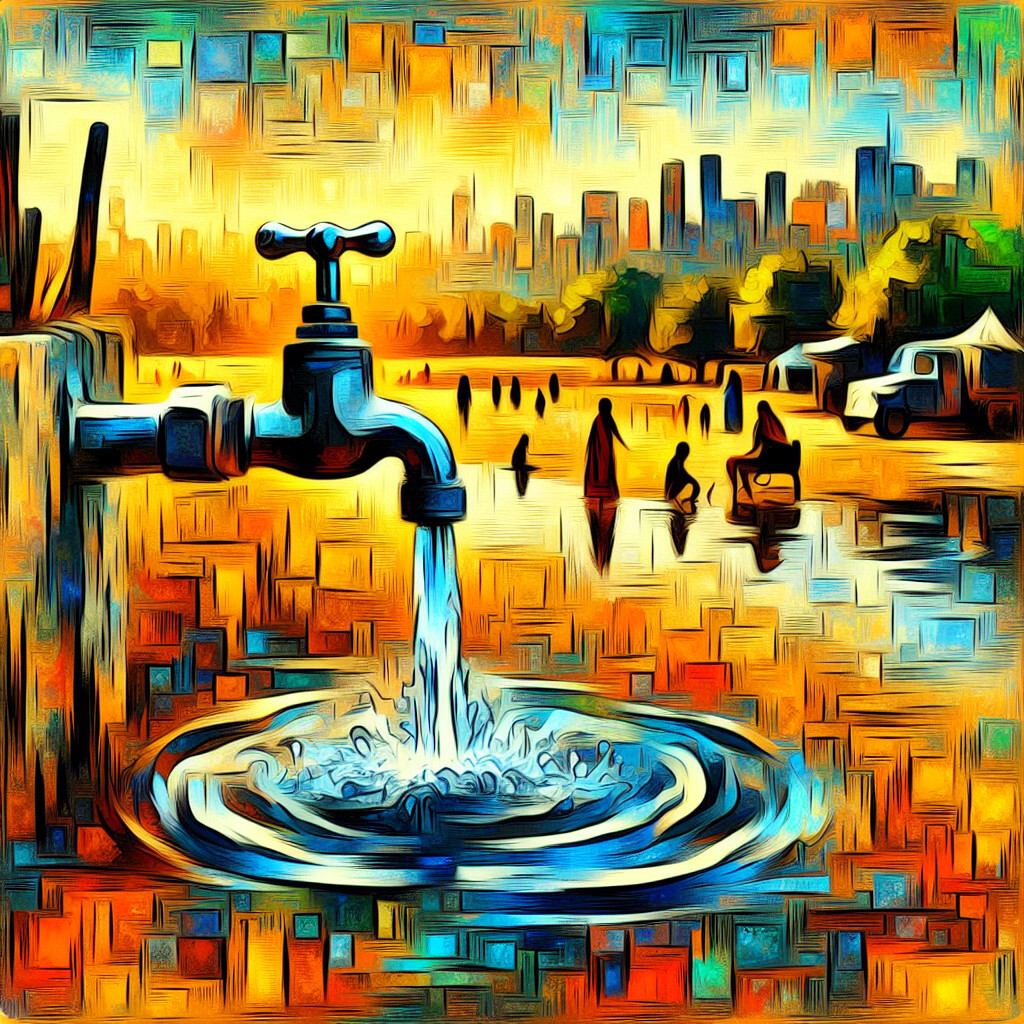-
Table of Contents
“India’s Tap Water: A Quest for Purity Amidst Challenges.”
Introduction

The tap water in India is a subject of concern due to its quality and safety for consumption. The country faces significant challenges in terms of water pollution and lack of proper treatment facilities, leading to a high risk of waterborne diseases. While some urban areas may have access to treated tap water, it is often advised to boil or filter it before drinking. In many rural areas, tap water is not readily available or safe for direct consumption. Therefore, the use of bottled or purified water is common.
Understanding the Quality of Tap Water in India
India, a country with a population of over 1.3 billion, faces a significant challenge in providing clean and safe tap water to its citizens. The quality of tap water in India varies greatly, depending on the region, the source of the water, and the treatment it undergoes before reaching the consumer. This article aims to provide an understanding of the quality of tap water in India.
India’s tap water system is primarily sourced from surface water, such as rivers and lakes, and groundwater. However, these sources are often contaminated with pollutants from industrial waste, agricultural runoff, and untreated sewage. The Ganges River, for instance, which is a primary source of water for a large part of Northern India, is heavily polluted with industrial effluents and untreated sewage. This pollution significantly affects the quality of tap water sourced from it.
The treatment of water before it reaches the tap also plays a crucial role in determining its quality. In urban areas, water is typically treated at centralized treatment plants where it undergoes processes such as coagulation, sedimentation, filtration, and disinfection. However, the effectiveness of these treatment processes can vary. In some cases, due to inadequate treatment or contamination during distribution, the water may still contain harmful bacteria, viruses, and other pathogens when it reaches the tap.
In rural areas, the situation is often more challenging. Many rural communities lack access to centralized water treatment facilities. Instead, they rely on local wells or other sources of groundwater, which may be contaminated with harmful substances such as arsenic or fluoride. In these areas, the quality of tap water can be significantly lower, posing serious health risks to the population.
The Indian government has recognized the issue of water quality and has launched several initiatives to improve it. The Jal Jeevan Mission, for instance, aims to provide every rural household with a functional tap connection by 2024. The mission also emphasizes the importance of regular testing to ensure the quality of the supplied water.
Despite these efforts, the quality of tap water in India remains a concern. A study conducted by the Bureau of Indian Standards in 2019 found that tap water in 21 out of 28 Indian states did not meet its quality standards. The study highlighted the presence of bacteria, high levels of TDS (Total Dissolved Solids), and chemical contaminants in the tested samples.
In conclusion, the quality of tap water in India is a complex issue, influenced by factors such as source water quality, treatment processes, and distribution systems. While efforts are being made to improve the situation, significant challenges remain. For the time being, it is advisable for individuals in India to treat tap water before consumption, either by boiling, using a household water purifier, or through other reliable treatment methods. This will help to ensure the safety and health of the consumer until such time as the quality of tap water across the country meets the necessary standards.
Health Implications of Drinking Tap Water in India
India, a country known for its rich culture, diverse traditions, and vibrant festivals, is also infamous for its water quality. The tap water in India, unfortunately, is not considered safe for direct consumption due to various health implications. This article aims to shed light on the health risks associated with drinking tap water in India and the reasons behind its poor quality.
The primary concern with India’s tap water is contamination. The water supply in many parts of the country is polluted with harmful substances such as bacteria, viruses, and parasites. These contaminants can cause a range of health problems, from minor gastrointestinal discomfort to severe diseases like cholera, typhoid, and hepatitis. The World Health Organization (WHO) estimates that about 37.7 million Indians are affected by waterborne diseases annually, 1.5 million children are estimated to die of diarrhea alone, and 73 million working days are lost due to waterborne disease each year.
The contamination of tap water in India is largely due to inadequate sanitation facilities and poor waste management systems. In many areas, sewage and industrial waste are discharged directly into rivers and lakes without proper treatment. This polluted water then seeps into the groundwater or is drawn into the public water supply system, making the tap water unsafe for consumption.
Furthermore, the infrastructure for water supply in India is often outdated and poorly maintained. Leaking pipes and faulty filtration systems can introduce additional contaminants into the tap water. Even in urban areas where water treatment facilities exist, the water quality can be compromised by the time it reaches households due to the deteriorating condition of the distribution network.
Heavy metals are another significant concern in India’s tap water. A study conducted by the NGO Pure Earth and Green Cross Switzerland identified over 275 sites in India where groundwater used for drinking was contaminated with heavy metals like lead and arsenic. Long-term exposure to these toxic substances can lead to serious health issues, including neurological damage and cancer.
Despite these challenges, efforts are being made to improve the quality of tap water in India. The government has launched several initiatives aimed at enhancing water infrastructure, promoting safe sanitation practices, and ensuring access to clean drinking water for all citizens. However, these efforts are yet to yield significant results, and the problem of unsafe tap water persists.
In the meantime, it is crucial for individuals in India to take measures to protect themselves from the health risks associated with contaminated tap water. Boiling water before consumption, using water purifiers, and relying on bottled water from trusted sources are some of the steps that can be taken to ensure safe drinking water.
In conclusion, the tap water in India is currently not safe for direct consumption due to various health implications. Contamination from bacteria, viruses, parasites, and heavy metals pose serious health risks to those who consume this water. While efforts are being made to improve the situation, it is essential for individuals to take precautionary measures to safeguard their health. The issue of water quality in India is a pressing one, and it is hoped that with continued efforts and increased awareness, the day when every Indian has access to safe and clean tap water is not far off.
The Role of Government in Ensuring Safe Tap Water in India
The role of the government in ensuring safe tap water in India is a topic of paramount importance, given the country’s vast population and the critical role that clean water plays in public health. The government, at both the central and state levels, has a significant responsibility in this regard, and its actions and policies can have far-reaching implications.
The Indian government has long recognized the importance of providing safe and clean drinking water to its citizens. The Constitution of India, under Article 21, guarantees the right to life and personal liberty, which has been interpreted by the Supreme Court to include the right to clean water. This constitutional mandate has led to the formulation of various policies and programs aimed at improving the quality of tap water across the country.
One of the most significant initiatives in this regard is the Jal Jeevan Mission, launched by the central government in 2019. This ambitious program aims to provide every rural household in the country with a functional tap water connection by 2024. The mission not only focuses on the provision of water but also emphasizes its quality, with a robust framework for monitoring and surveillance of drinking water quality.
The government has also established the Central Ground Water Board (CGWB) to regulate and manage the country’s groundwater resources, which form a significant source of tap water. The CGWB conducts regular surveys and assessments to monitor the quality of groundwater and has the authority to take necessary action in case of contamination.
Moreover, the Bureau of Indian Standards (BIS) has set stringent standards for drinking water in the country. The BIS conducts regular inspections and testing of water samples to ensure compliance with these standards. Any deviations can lead to strict penalties, thereby acting as a deterrent against the provision of unsafe water.
However, despite these efforts, the challenge of ensuring safe tap water in India is far from over. A significant part of the problem lies in the implementation of these policies and programs. Corruption, lack of accountability, and inadequate infrastructure often hinder the effective execution of these initiatives.
Furthermore, the problem of water contamination remains a significant concern. According to a report by the NITI Aayog, 70% of India’s water is contaminated, leading to nearly 200,000 deaths each year. This highlights the urgent need for more stringent measures to monitor and improve water quality.
In response to these challenges, the government has been taking steps to strengthen its efforts. For instance, it has been promoting the use of technology for better monitoring and management of water resources. It has also been working on improving the infrastructure for water supply and treatment, with a focus on sustainable and eco-friendly solutions.
In conclusion, the role of the government in ensuring safe tap water in India is crucial and multifaceted. While significant strides have been made, there is still a long way to go. The government’s efforts need to be complemented by increased public awareness and participation, as well as stronger partnerships with private players and non-governmental organizations. Only then can the goal of safe and clean tap water for all in India be truly realized.
Comparative Analysis: Tap Water in India vs. Other Countries
India, a country with a population of over 1.3 billion, has a complex relationship with tap water. The quality and safety of tap water in India vary significantly across the country, influenced by factors such as geographical location, infrastructure, and local water treatment practices. This article aims to provide a comparative analysis of the tap water in India versus other countries, shedding light on the challenges and potential solutions to India’s water crisis.
In comparison to developed countries like the United States, Canada, and most of Europe, where tap water is generally safe to drink, India’s tap water situation is quite different. In these developed nations, stringent regulations and advanced water treatment technologies ensure that tap water is free from harmful contaminants and safe for consumption. Regular testing and monitoring of water quality are also standard practices, contributing to the overall safety of the water supply.
In contrast, India’s tap water often falls short of international safety standards. A study conducted by the Bureau of Indian Standards in 2019 found that tap water in 21 major Indian cities, including Delhi and Mumbai, was not fit for drinking without treatment. The water samples were found to contain various contaminants, including bacteria, nitrates, and heavy metals, which can pose serious health risks.
The situation in India is more akin to that in many developing countries, where access to clean, safe drinking water remains a significant challenge. In countries like Nigeria and Pakistan, for instance, the quality of tap water is often poor due to inadequate water treatment facilities and infrastructure, similar to the situation in many parts of India.
However, it’s important to note that not all tap water in India is unsafe. In certain regions, particularly in the southern and western parts of the country, tap water is generally considered safe to drink. This is largely due to better infrastructure and more effective water treatment practices in these areas. Moreover, some Indian cities have made significant strides in improving their water quality in recent years. For instance, the city of Indore was recognized for its clean water supply by the Ministry of Housing and Urban Affairs in 2020.
Despite these improvements, the overall quality of tap water in India still lags behind that of many other countries. This is largely due to a combination of factors, including inadequate infrastructure, poor water treatment practices, and a lack of stringent regulations and enforcement. Addressing these issues will require significant investment and concerted efforts from both the government and private sector.
In conclusion, while the quality of tap water in India varies significantly across the country, it generally falls short of international safety standards, particularly when compared to developed countries. However, there are regions and cities within India where the tap water is safe to drink, reflecting the progress that has been made in recent years. Going forward, improving the quality and safety of tap water across the country will be a critical challenge for India, requiring a comprehensive and sustained effort.
Q&A
1. Question: Is tap water in India safe to drink?
Answer: Generally, tap water in India is not considered safe to drink due to potential contamination with bacteria, viruses, and pollutants.
2. Question: What are the common contaminants found in India’s tap water?
Answer: Common contaminants in India’s tap water can include harmful bacteria, viruses, heavy metals, and other pollutants such as pesticides and industrial waste.
3. Question: How do people in India usually consume water?
Answer: Most people in India prefer to drink bottled water, filtered water, or water that has been boiled to ensure it’s safe for consumption.
4. Question: Are there efforts to improve the quality of tap water in India?
Answer: Yes, the Indian government and various NGOs are working on projects to improve water infrastructure and sanitation, aiming to provide clean and safe drinking water to all residents.
Conclusion
The tap water in India is generally considered unsafe for direct consumption due to contamination issues such as bacteria, viruses, and heavy metals. Despite improvements in water infrastructure, access to clean and safe drinking water remains a significant challenge. Therefore, it is often recommended to boil or filter tap water before drinking.






